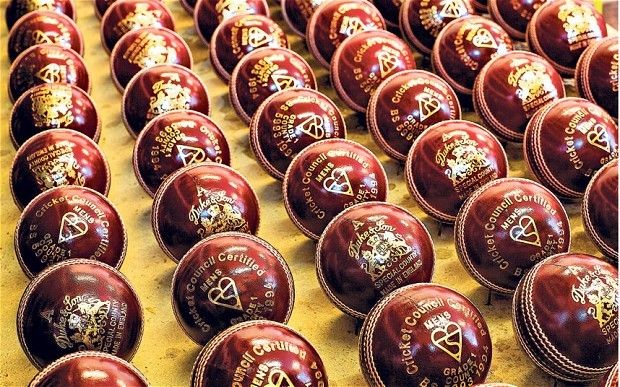
Why Bangladesh should use the Dukes ball against Australia

In the ongoing Ashes series, Australia’s performance has been nightmarish so far. At Cardiff, Edgbaston and Trent Bridge, they were crushed by a formidable English attack. The Australian batsmen were dumbfounded against the moving ball and thus, messed up with their antipodean technique and then their minds. The Dukes ball, which the English pacers are using in this year’s Ashes series proved to be the wrecker-in-chief.
After witnessing Australia’s horrendous display, former Australian skipper Ricky Ponting said, “One thing I am going to recommend as soon as I get home is that we actually change the balls we use in Australia. I think we should be using Dukes balls in Australia now. I think it's been highlighted enough times that we struggle when the ball swings and seams. You go back two, three years ago when I was playing Shield cricket, Hobart got heavily criticized for doing too much, but I batted there, but you could still make runs”.
Australia will tour Bangladesh in October this year. At present, Bangladesh can’t be taken lightly and they are a unit which plays to win. The current Bangladeshi bowling attack, be it in One-day internationals or Tests, is not dependent on the spinners anymore. Promising youngsters like Mustafizur Rahman, a rejuvenated Rubel Hossain, energetic Taskin Ahmed, and work-horse Mohammad Shahid have added enough vim to the Bangladeshi attack. Gone are the days when a pace bowler would come and bowl with the new ball only to fulfill the formalities and as soon as the shine goes away, the stage was dominated by the left-arm spinners. In the course of time, the Bangladeshi pace bowlers have become potent enough.
As Bangladesh have the pacers to hit the jackpot then why not use the Dukes ball against Australia?
In the Bangladeshi domestic arena, the Kookaburra and SG balls are used more keeping in mind the conditions and the presence of spin bowlers more than the pacers. Moreover, it has become an unofficial rule in Bangladesh cricket that, whenever a team tours here, either the Kookaburra or SG ball is used. If the visitors are from the subcontinent, then the Kookaburra ball is chosen while the SG balls are used against the non-subcontinental teams.
Moreover, there is a school of thought that, the Dukes ball is not effective in dry conditions and placid or hard tracks. Thus, it is less effective in the subcontinent, Australia, South Africa and West Indies. But in the recently concluded series against England, Curtly Ambrose, the Caribbean bowling coach, has shown how the Dukes ball can be effective in dry conditions and flat tracks. The Caribbean pacers were highly benefited by the Dukes ball.
The Dukes brand, owned by an Indian Dilip Jajodia, produces thousands of hand-stitched balls every year, which are used in England at Test and domestic level. It is also supplied in the West Indies. The Dukes ball is hand-stitched.
According to Jajodia, a hand-stitched ball has six rows of stitching. But instead of the outer two seams being purely decorative as, on a machine stitched ball, all six rows hold the cork ball together, creating a tension so that when the ball hits the deck it moves more and holds its shape better.
The Dukes brand produces two varieties of balls, one variety of Dukes ball is manufactured for the swinging and seaming English conditions while the other variety is for dry and abrasive wickets.
The Dukes ball doesn’t swing from the start, but as soon as the lacquer used on the ball wears off, it starts to swing conventionally. In the swifter conditions, it moves prodigiously and the larger seams are needed for the slower conditions. The Dukes ball is a highly productive in generating reverse swing. The Kookaburra ball generates swing when it’s new, but after 35-40 overs, it loses its shine, becomes softer and more helpful for the batsmen. Whereas, the SG balls hardly swing and aids the spinners a lot. SG ball is quite batting friendly as well.
Bangladesh might opt for the SG ball against Australia, but they must not forget of how their pacers struck gold against India and South Africa and keeping in mind the benefits of the pacers and the weakness of Australia, Bangladesh should start thinking about using the Dukes ball. The kind of pace bowlers Bangladesh have, the use of the Dukes ball might prove handy against Australia. The hierarchy of Bangladesh cricket should think about this matter.